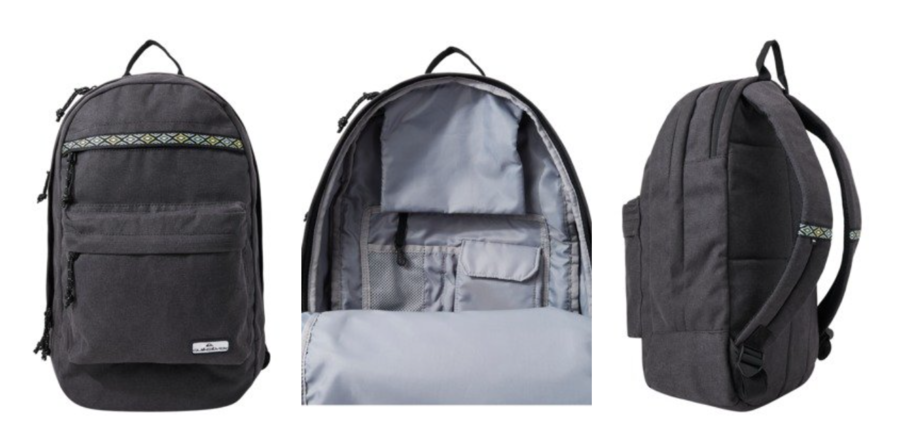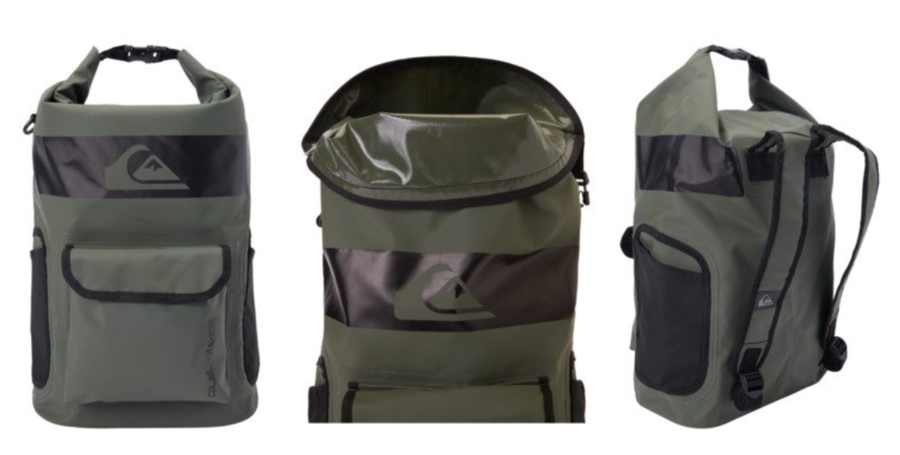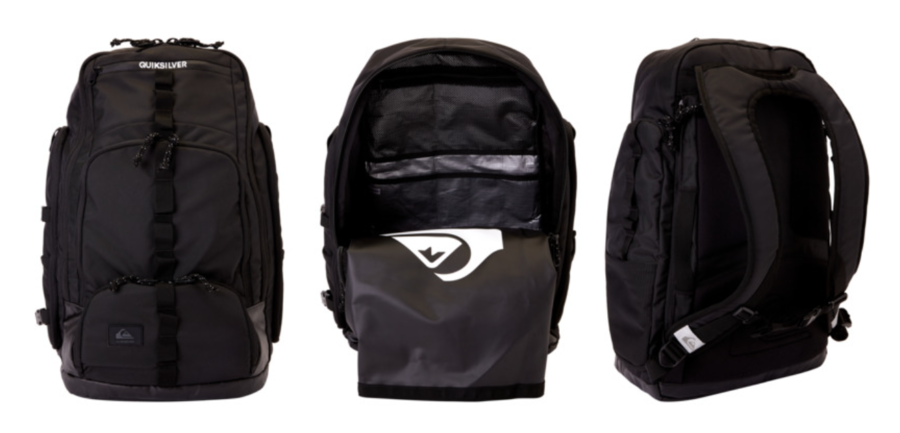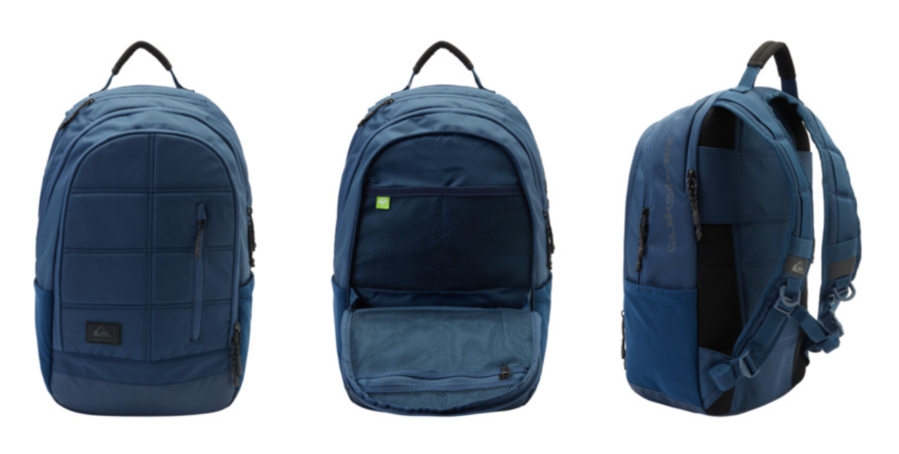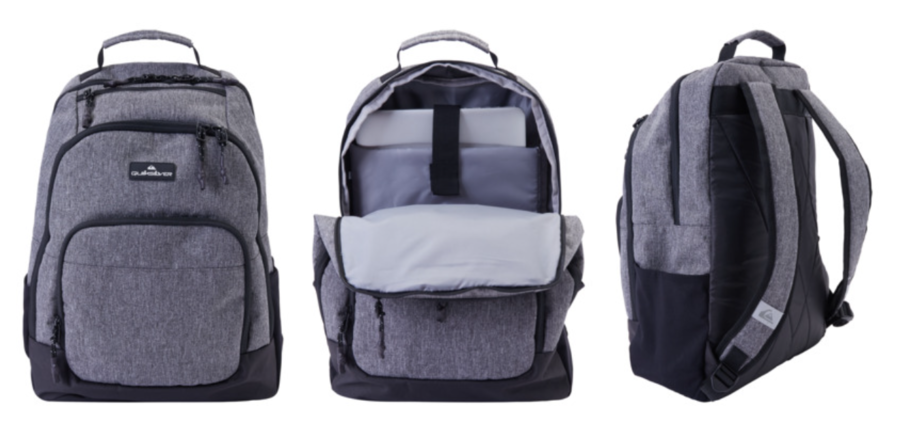-
Enter now !
GIVEAWAY
Win an Epic Snow Escape with Quiksilver x Ski amadé !
-
Login/Register
QUIKSILVER FREEDOM BENEFITS
Free shipping & return
How To Choose a Backpack by Activity
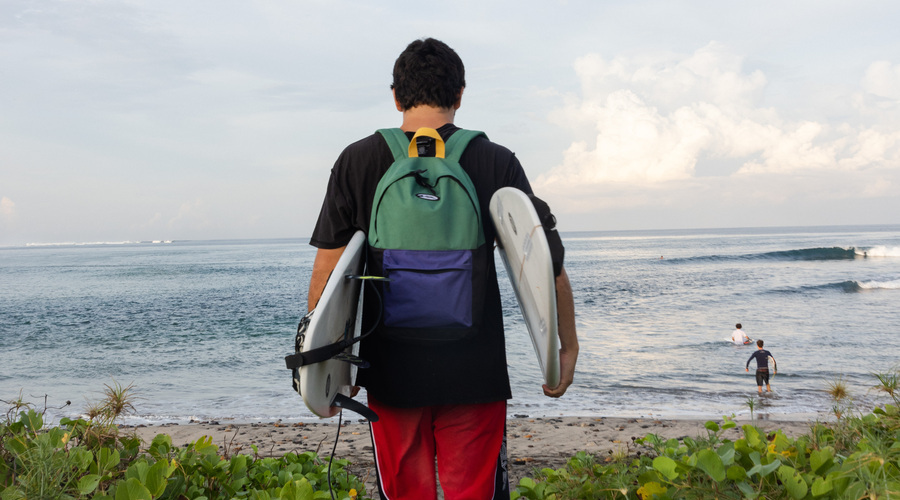
A backpack is an ideal way to store and carry your gear, no matter what activity you have in mind. If you need a backpack recommendation, the first thing to consider is how you will be using it.
Are you looking for a pack to take to work, on travel, or for camping and surfing? You’ll need to think about features, capacity, materials, and more, but your activity will determine the type of gear you need. Let’s take a look at the various backpacks you will find.
Backpack Capacity
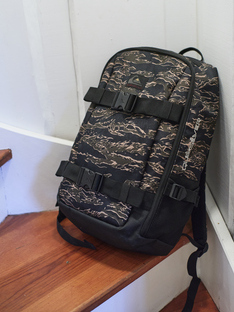
Backpack capacity is a big factor in deciding on the right pack. Consider how long your trip will be, the types of activities in which you will use the backpack and the features you prefer.
You can find specific packs for your interests, including every day, surfing, travel, hiking, camping and those for school or carrying laptops. Here are some general guidelines.
| Type of Backpack | Capacity | Types of Activities | General Features |
| Everyday/Commuter | 15-35 L | Walking around town, commuting, transporting computers and camera gear | Durable, sturdy, comfortable, secure |
| Surf | 30-50 L | Surf trips, nature adventures, beach days | Multiple pockets, wet/dry storage, water resistance, functional layout |
| Travel | 25-45 L | Day trips, overnighters, longer vacations, flight carry-ons | Ample storage, practical, unstructured style for easy packing |
| Hiking | 10-35 L | Hiking, climbing, canyoneering, fishing | Rugged, comfortable, many pockets, sternum strap, clips |
| Camping | 35-70 L | Backpacking, extended travel, trips in nature | Quality materials, durable, padded straps, waist belts, loops |
| Laptop/School | 10-30 L | School, work, meetings | Slim and efficient, anti-theft zippers, hidden pockets, laptop straps |
How To Choose an Everyday or Commuter Backpack
What is a commuter backpack? Every day or commuter backpacks are usually designed to be simple, versatile and straightforward, making them ideal for daily use. They offer a variety of styles, features, and storage options. The question of what size backpack for commuting is needed mostly depends on how much stuff you like to travel with, but anything in the 15-35 litre range should be fine.
Everyday backpacks share several common features, including:
- Organization: They provide several storage pockets and mesh pockets for different-sized items.
- Padded shoulder straps: Comfort is essential when you wear a pack daily. Padded shoulder straps let you move around without unnecessary pressure.
- Durable fabric: These backpacks often use tough materials designed to withstand daily wear and tear. Many fabrics are eco-conscious as an added plus.
How To Choose a Surf Backpack
A surf backpack may look similar to an everyday pack, but there are some key differences. You’ll find specific features made for surfers and their accessories, making these packs perfect for carrying wetsuits and all the gear you need for surfing.
Some of the things that set surf backpacks apart are:
- Waterproofness: Your surfing backpack can get wet from the ocean, trekking through lush environments, or from a dripping wetsuit. Waterproofness will protect you from a soggy, damp pack.
- Mesh pockets: These pockets offer a place to keep loose objects. Whether you need to store a beanie to warm up quickly after a surf or a water bottle or snack, mesh pockets are convenient.
- Wet/dry bag: Keep your wet items separate or your dry things dry with a wet/dry compartment or removable bag.
- Fin storage: Most surfboards have interchangeable fins and different waves require unique fin setups. Having designated fin storage in your pack will help you change fins quickly and get in the water in no time.
- Wax pocket: Wax pockets offer a separate space to conveniently store your wax and prevent a melted mess from covering the rest of your gear.
- Internal key fob: Keep your keys safe and secure with an internal clasp to attach them to.
How To Choose a Travel Backpack
Travel backpacks are perfect for carrying clothes and necessities on vacation. Whether you plan a weekend getaway or an extended trip overseas, you need to be aware of travel backpack dimensions.
What backpack size for travelling?
Besides being able to accommodate all your things, these packs need to adhere to specific regulations when travelling. In general, you can bring up to a 45L backpack as a carry-on on domestic flights, while international flights often max out at 40 L, but we always recommend checking with your specific airline first.
Travel backpacks come in all shapes and sizes, but usually have a functional layout and style. Some common items you’ll find include:
- Pockets: Travel backpacks offer multiple pockets in different sizes. Many have a large central pocket perfect for packing lots of clothes for your trip, and smaller ones for travel-size toiletries and quick snacking access. Look for sunglass pockets and those with different entries like roll-top and front-zip.
- Zippers: These packs have durable, rust-resistant zippers, so you can trust them to hold up over many trips without issue. They come in different styles, including front-zip, top-zip, and side zippers to add to their efficiency.
- Ergonomic straps: Quality straps keep the weight of your backpack properly stabilized against your body to minimize extra movement and conserve energy.
How to pack a backpack for travel?
When it comes to backpacking, how you pack is just as important as what backpack you have. For example, tightly rolling your tees instead of folding them is a great way to save space AND prevent crease lines.
What size backpack for 3 months of travelling?
Wheeled baggage is great for airports, but If you’re planning an extended trip with lots of stair climbing and trail walking along the way, get a large hiking rucksack with plenty of room for the extra essentials. You’ll also be lugging extra weight around, so make sure you choose one with large, well-padded hip straps and a chest strap.
How To Choose a Hiking Backpack
There’s no right way to pack a hiking backpack, but there are plenty of wrong ways. Use a backpacking checklist to ensure you have everything, and as a general rule keep the small stuff close to hand in the top compartment, heavy stuff in the midsection (weight distribution) and lighter bigger stuff (sleeping bag) in the bottom.
Hiking backpacks are comfortable and efficient – everything from clips, pockets, and loops are there for a specific reason. Some features you will find on these packs are:
- Water bottle holder: If you try to jam water bottles into other packs, you can tear the mesh and wear pockets down. Designated water bottle holders ensure a snug fit, no spillage, and a secure spot for your bottle.
- Sternum strap: Sternum straps disperse the weight of the pack across a broader area, keeping you centred and performing on your hike. Inclines can pull your weight backwards and forward, and these straps will keep the pack solid and secure.
- Reflective patches: Having safety features like reflective patches will make you more visible and keep you safe on your hike. They are great for locating your pack in low-light conditions or in the dark.
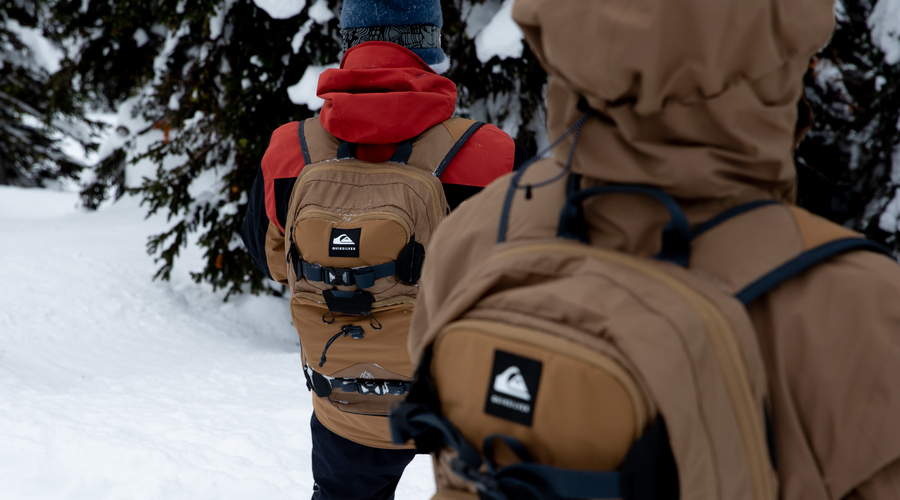
How To Choose a Camping Backpack
Camping backpacks allow people to carry all they need to set up camp in the wilderness. These packs are large and spacious, providing plenty of room for tents, sleeping bags, clothes, and cooking gear.
Camping backpacks range in storage size and style, but share many features:
- Capacity: to decide what size backpack for camping is required you’ll need to plan in terms of how many litres. If you’re planning on an overnight trip or prefer lightweight hiking, a 35-50 L capacity is sufficient. For multi-day trips, a 60 L pack is optimal, while 70 L packs are excellent for trips lasting more than five days.
- Moulded shoulder straps: When you’re carrying this much gear up a mountain, you need all the comfort you can get. Moulded shoulder straps offer excellent weight dispersion across your shoulders, and you can adjust them to fit your body type as needed.
- Insulated cooler: These coolers will keep food and drinks cold, letting you prepare meals and have refreshing breaks on the trail or in the campsite. As a bonus, many are leakproof and waterproof.
How To Pack A Backpack For Camping
To pack a backpack for camping, prioritise essentials like a tent, sleeping bag, and cooking gear at the bottom. Distribute weight evenly, placing heavier items closer to your back. Utilise pockets for quick access to essentials. Organise clothing in waterproof bags. Finally - remember to include a first aid kit!
How To Choose a Laptop Backpack or School Backpack
Laptop or school backpacks are designed for transporting books or small computers. They are made for daily use, streamlined to fit just what you need and easy to maneuver around town.
Laptop or school backpacks have unique characteristics that make them great for students and anyone who needs their laptop on the go. Some things they share are:
- Padded sleeves: It is easy to bang your laptop around when it is in a backpack. Laptop backpacks have padded sleeves to provide protection and keep your device safe from impact.
- Front pocket cable storage: Front pocket cable storage makes it easy to access charging cords, USB cables, and other accessories quickly.
No matter what you need a backpack for, there are many styles and designs available. The features built into backpacks are what make them unique, so be sure to shop around for the ideal one for you.




